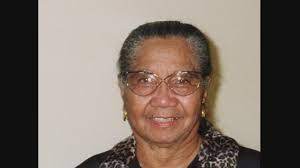Berkeley
Special Ed Student Languishes After Berkeley High Takes Away Instructional Aide
Nineteen-year-old Berkeley High student Anthony Gaines sits inside a room beyond our understanding within his own mind and wonders why one of his best friends, his mentor, and his constant daytime companion of three years has now deserted him.
At least, we believe that’s what Anthony Gaines is thinking. Anthony is non-verbal, has been blind since birth and began losing most of his hearing soon afterwards, and so while his thoughts may be complex, he is only able to express them in the most restricted of forms.
He has been diagnosed with Norrie Syndrome, a rare genetic disease. Because of Anthony’s limited ability to communicate with the world, no-one is able to explain to him that his longtime mentor has not deserted him at all, but has been transferred from responsibility for his care by the helper’s employers, Berkeley High School.
Anthony’s mother, Stacey Rodgers, has an additional reason why she can’t give her son an explanation.
“I can’t tell him why Linnette isn’t working with him any more because I don’t know, myself,” Rodgers said. “They haven’t told me anything other than that they have the authority to transfer her.”
The Linnette that Rodgers is talking about is Linnette Robinson, an Instructional Assistant (IA) at Berkeley High School. As a special needs student, Anthony is eligible to attend public school until he is 22. He attends Berkeley High because he lives full time at Build House, a West Berkeley home for children with severe disabilities.
Rodgers, a single mother, does not live with him, but visits with him several times a week.
While a lead teacher runs the classroom in which Anthony spends his day at Berkeley High, the Instructional Assistant must be at his side constantly while at school, including getting him to and from the bus and the bathroom and overseeing his eating at lunch and snack times.
His IA is his lifeline to the world.
When Robinson first met Anthony at Berkeley High School four years ago, he had been assigned to another IA. “At the time, nobody wanted to work with Anthony because he would have violent outbursts.”
The problem was, Robinson later learned, that neither the teacher nor the instructional assistant assigned to Anthony were communicating with him. “They weren’t signing with him,” she said.
Signing is a particular challenge in communicating with deaf-blind individuals. While a deaf sighted person can see both the familiar standard American Sign Language hand signals as well as the physical expressions and mannerisms of the person they are “talking” with, a deaf-blind person
uses a special form of that sign language done exclusively by hand contact.
Anthony has access to a cochlear implant that allows him hearing in one ear, but an earlier device frequently malfunctioned, and he has had trouble adapting to its replacement.
“If he was wearing his cochlear implant, they would simply give him orders, versus him being able to communicate back to them,” Robinson said. “He had no way of releasing any information.”
Robinson was soon assigned to take over instructional assistant responsibilities for Anthony. The first thing she said she did was to ask the lead teacher in the class: “What sign language does Anthony use? What words does he know? And the teacher didn’t know. Nobody had told him.
“So I started working with Anthony to do things like say that he had to go to the bathroom. I started getting him to walk up and down the hallway until he could do it on his own.”
Robinson began to see progress: “We got to the point where we would sit there arguing back and forth using sign language. The other staff members couldn’t believe it. They didn’t know he could do things like that.
“We had progressed to the point where Anthony’s mother said he had signed to her that he needed to go to the bathroom, and then got up and went. He’d never done that before.”
Anthony’s mother had made formal complaints to Berkeley school officials about Anthony’s educational environment during his first year at Berkeley High. Although Rogers continued to press Berkeley High School officials to add more items to her son’s learning day, she held off on formal complaints after Robinson took over as Anthony’s IA and she began to see him progressing at the school for the first time.
At the same time, his outbursts and acting out at school decreased dramatically. But then abruptly after three years of progress, without prior warning to either Robinson or Rodgers, Robinson was taken off Anthony’s assignment at the beginning of the 2013-14 school year.
In a complaint filed with Berkeley Unified School District in January of this year, Rodgers wrote that “Anthony had formed a trusting relationship with [Robinson] and had progressed well under her instruction. I was promised [by school officials] that the new IA was trained in sign language and that [Robinson] would train the new person so that a transition…would occur.”
“Both things…were lies,” she continued. “The first week of school my son worked with a substitute Instructional Assistant. In the first month of school my son experienced a new untrained classroom teacher (no deaf/blind training), a new classroom in a new building, and an IA with absolutely no training.”
Responding, Berkeley Unified School District Public Information Officer Mark Copland called the Robinson complaint “ancient history,” adding that the Berkeley School Board had already upheld Robinson’s transfer from working with Anthony.
Copland did not return several phone messages asking to speak with someone at Berkeley High with direct knowledge about Anthony’s case.
While Robinson wants to be returned to work with Anthony, she said she has been told by school officials that they want to use her skills with other children. However, she has her own theory about her reassignment.
“It’s because I talk to Stacey,” Robinson said, explaining, “I think it’s a Black-White thing. I’ve seen a number of Caucasian kids – if their parents don’t want a particular staff member on their case, they take them off their case. If they say they want something for their student, they get something for their student.”
“Since Stacey is a fighter, they’re going to show her she’s not going to get what she wants,” Robinson said. “They told me before I met her that she was crazy, but after I met her, I found out all she was trying to do was get them to do the things they’re supposed to do for her child, like any parent would do.”
Anthony, Rodgers and Robinson are African-American.
Robinson said that by her observation, Anthony has regressed in the year since she was removed from his assignment. “They’re back to doing things for him, when I had been getting him to do things for himself,” she said.
“They’re not challenging him,” she continued. All that dancing and happiness he had, he doesn’t do any more. He has a sullen look on his face all the time.”
He has also acted out in other ways, with increasing incidents of stripping off his clothes at school or becoming violent with school staff.
“I’m going to ask them again to assign Linnette to Anothony,” Rodgers said as the new school year begins. “I hope they listen to me this time. He was doing so well with her. He’s going to end up being at Berkeley High for seven years. I don’t want the rest of his time to be a waste.”
Activism
South African Solidarity Committee Hosts 31st Annual Celebration
“We’re all together for each other celebrating 31 years of building international solidarity between the people of the United States and South Africa toward the implementation of the 1955 Freedom Charter and 2030 Sustainable Development Goals,” said COSAS Operations Manager Nicole Richards.Located in Berkeley, COSAS is dedicated to the continuing struggle by the people of South Africa’s need for independence.
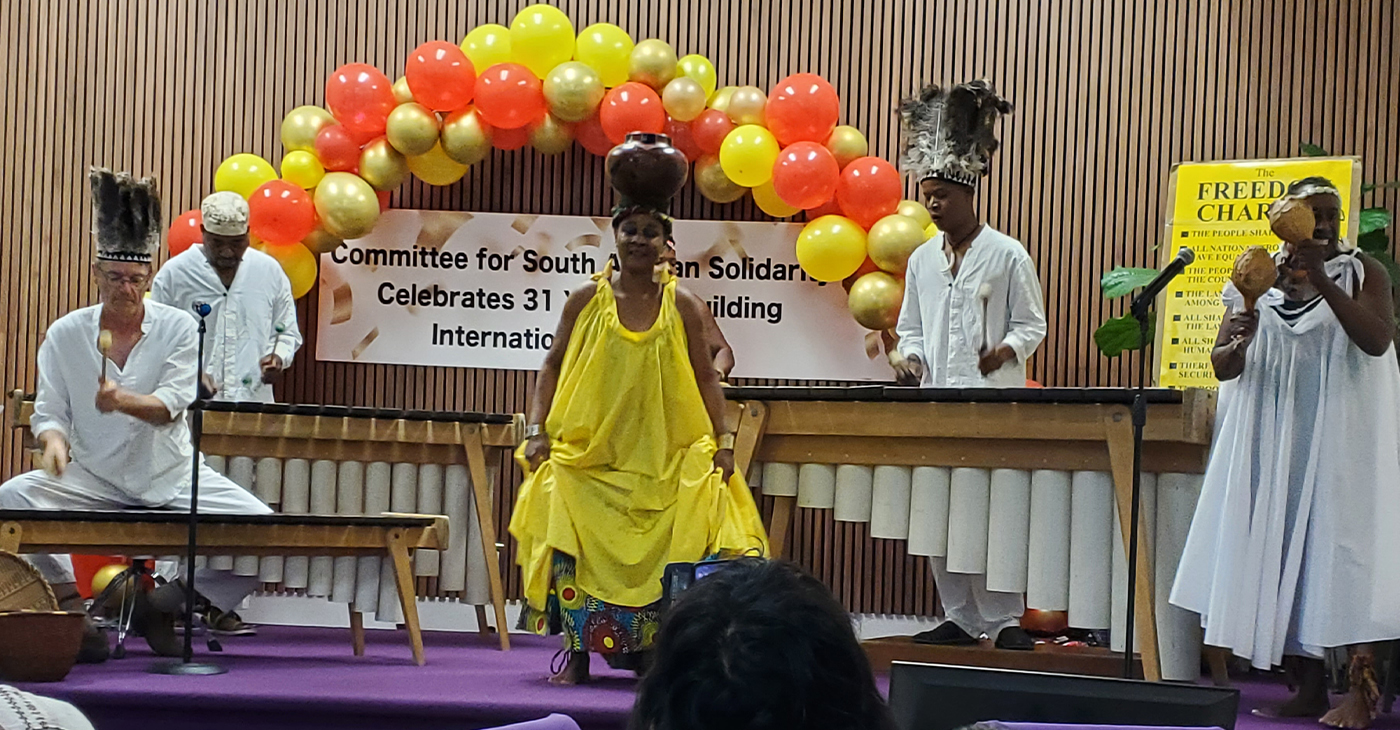
By Carla Thomas
The Committee of South African Solidarity (COSAS) celebrated its 31st anniversary on Saturday, Oct. 26 at the East Bay Church of Religious Science in Oakland.
Themed “Ubuntu,” a word in Zulu and Xhosa, which means “I am because we are,” the event brought together supporters and community members.
“We’re all together for each other celebrating 31 years of building international solidarity between the people of the United States and South Africa toward the implementation of the 1955 Freedom Charter and 2030 Sustainable Development Goals,” said COSAS Operations Manager Nicole Richards.
Located in Berkeley, COSAS is dedicated to the continuing struggle by the people of South Africa’s need for independence.
A soulful meal was prepared by Chef Rene Johnson and Blackberry Soul Catering along with live entertainment and speakers.
COSAS is an all-volunteer, private membership organization, made up of South Africans, Africans, students, professionals, clergy and others committed to building solidarity between the working people of the U.S. and the South African people still struggling for economic and political freedom.
Formed in 1993, the organization promotes the “real nature” of the changes and struggles taking place in South Africa and the African continent, according to Richards.
“COSAS counters ‘disinformation’ and ‘misinformation’ in the U.S. and Western mainstream media that creates division and distrust,” Richards said. “We produce the South African Beacon and organize and transport solidarity shipments of school supplies to South African grade schools requesting assistance,” Richards said.
According to organizers, COSAS is completely run by volunteers, free from the corporate and government agendas that continue to keep South Africa dependent on the West.
“We rely on the support of concerned individuals. Call us today about how you can get involved by sorting and packing supplies, donating office equipment, and supporting special events,” said Richards.
Earlier in the year, COSAS hosted its World Affairs film showing at Downs Memorial United Methodist Church. The screening featured a short film, “Feeding a Crisis: Africa’s Manufactured Hunger Pandemic,” exploring the hunger challenges African countries face and approaches to resolving the issues.
Contact the Committee for South African Solidarity, 1837 Alcatraz Ave., Berkeley, CA, 510-251-0998 for volunteer opportunities and event information.
Activism
‘Jim Crow Was and Remains Real in Alameda County (and) It Is What We Are Challenging and Trying to Fix Every Day,’ Says D.A. Pamela Price
“The legacy of Jim Crow is not just a legacy in Alameda County. It’s real. It is what is happening and how (the system is) operating, and that is what we are challenging and trying to fix every day,” said D.A. Price, speaking to the Oakland Post by telephone for over an hour last Saturday. “Racial disparities in this county have never been effectively eliminated, and we are applying and training our lawyers on the (state’s) Racial Justice Act, and we’re implementing it in Alameda County every day,” she said.
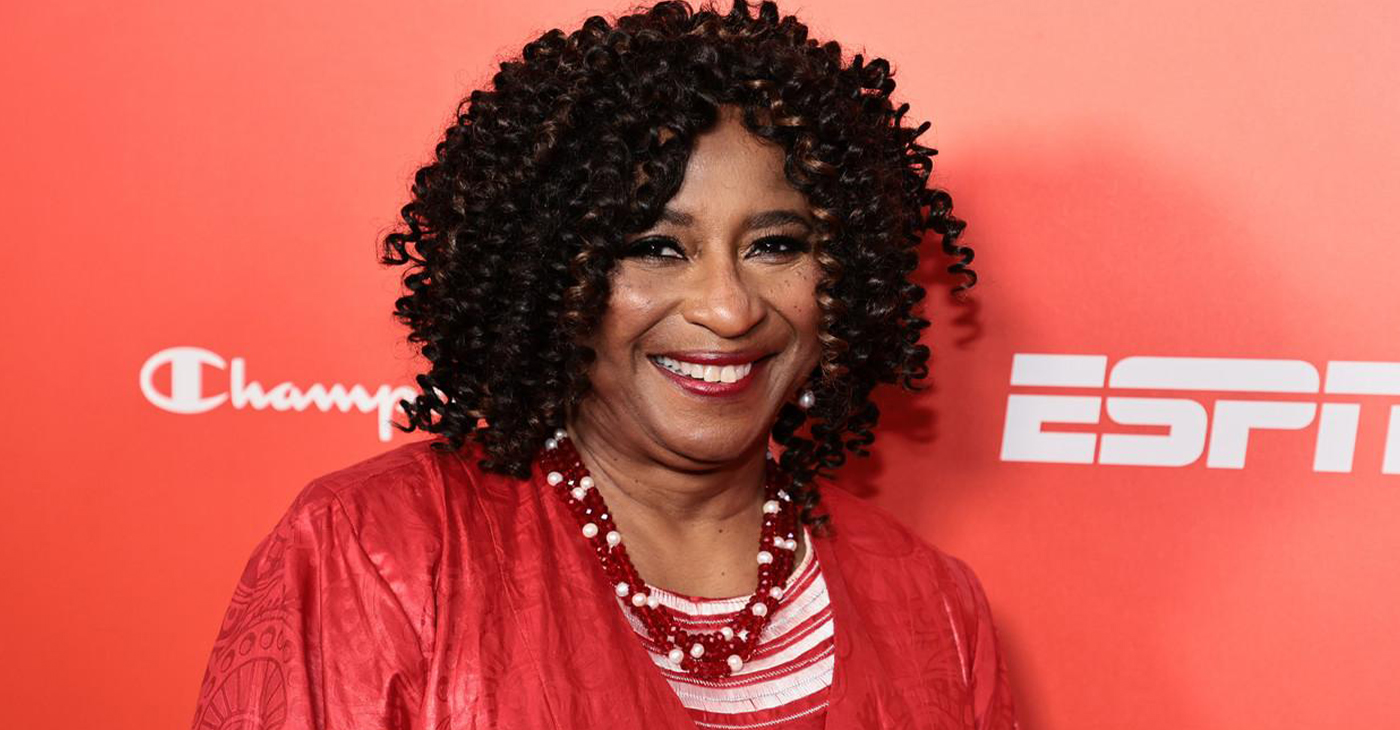
By Ken Epstein
Part One
Alameda County District Attorney Pamela Price gave an exclusive in-depth interview, speaking with the Oakland Post about the continuing legacy of Jim Crow injustice that she is working to overturn and her major achievements, including:
- restoring and expanding services for victims of crime,
- finding funding for an alternative to incarceration and/or prosecution for substance use and mental health-related misdemeanors and
- aggressively prosecuting corporations for toxic pollution and consumer violations.
“The legacy of Jim Crow is not just a legacy in Alameda County. It’s real. It is what is happening and how (the system is) operating, and that is what we are challenging and trying to fix every day,” said D.A. Price, speaking to the Oakland Post by telephone for over an hour last Saturday.
“Racial disparities in this county have never been effectively eliminated, and we are applying and training our lawyers on the (state’s) Racial Justice Act, and we’re implementing it in Alameda County every day,” she said.
Passed by the State Legislature, this law “is an extremely helpful tool for us to address the racial disparities that continue to exist in our system,” she said.
(The law addresses) “the racial disparities that we find in our juvenile justice system, where 86% of all felony juvenile arrests in the county are Black or Brown children.
“We trained the entire workforce on the Racial Justice Act. We are creating a data system that will allow us to look at the trends and to clearly identify where racism has infected the process. We know that where law enforcement is still engaging in racial profiling and unfair targeting and arresting, we’re trying to make sure we’re catching that.”
Many people do not know much about the magnitude of Alameda County District Attorney’s job. Her office is a sprawling organization with 10 offices serving 1.6 million people living in 14 cities and six unincorporated areas, with a budget this year of about $104 million.
Asked about her major achievements since she took office last year, she is especially proud of the expanded and renewed victims’ services division in the DA’s Office, she said.
“We have expanded and reorganized the entire claims division so that we are now expediting as much as possible the benefits that victims are entitled to. Under my predecessor, they were having to wait anywhere, sometimes as long as a year, to 400 days to get benefits.
“Claims had been denied that should not have been denied. So, we’re helping people file appeals on claims that were denied under her tenure,” D.A. Price said.
“Under my predecessor, (the victims’ service office) was staffed by people who were not trained to provide trauma-informed services to victims, and yet they were the only people that the victims were in contact with. We immediately stopped that practice,” she continued.
“We had to expand the advocate workforce to include people who speak Hmong, the indigenous language of so many people in this county who are victims of crime.”
More African Americans advocates were hired because they represent the largest percentage of crime victims and we hired a transgender advocate and advocates who speak Cantonese and Mandarin. “The predominantly Chinese American community in Oakland was not being served by advocates who speak the language,” said D Price
“We reduced the lag time from the delivery of benefits to victims from 300 to 400 days down to less than 60 days.”
She increased victim advocacy by 38%, providing critical support to over 22,500 victims, a key component of community safety.
Other major achievements:
- She recently filed 12 felony charges against a man accused of multiple armed robberies, demonstrating her seriousness about prosecuting violent crimes
- In October, a jury delivered a guilty verdict in the double murder trial of former Alameda County Sheriff’s Deputy Devin Williams, showing DA Price’s commitment to holding law enforcement accountable.
- She recently charged a man and woman in unincorporated San Leandro with murder, felony unlawful firearm activity, and felony carrying a loaded firearm in public.
- A. Price’s office was awarded a $6 million grant by the state for its CARES Navigation Center diversion program. In partnership with the UnCuffed Project at a Seventh Day Adventist Church in Oakland, the program provides resources and referrals for services to residents as an alternative to incarceration and/or prosecution for substance use and mental health-related misdemeanors.
“This is the largest grant investment in the history of the Alameda County District Attorney’s Office,” said D.A. Price.
She explained that the program now has a mobile unit. “We have washers and dryers. We have a living room. We have a television. It’s a place where people can decompress, get themselves stabilized,” she said.
The project has “the ability to refer people to housing, to more long-term mental health services, to social services, and to assist them in other ways.”
- Her office joined in a $49 million statewide settlement with Kaiser Health Plan and Hospitals, resolving allegations that the healthcare provider unlawfully disposed of hazardous waste, medical waste, and protected health information. The settlement, which involved the state and a half dozen counties, resulted in Alameda County receiving $7 million for its residents.
- DA Price charged a former trucking company employee for embezzling over $4.3 million, showing her commitment to tackling white-collar crime.
- For the first time, Alameda County won a criminal grand jury indictment of a major corporation with two corporate officers that have been sources of pollution. “They had a record of settlements and pollution in this community, and they had a fire that constituted a grave danger,” she said.
Attorney Walter Riley contributed to this article.
Activism
“Two things can be true at once.” An Afro-Latina Voter Weighs in on Identity and Politics
“As a Puerto Rican I do not feel spoken to in discussions about Latino voters… which is ironic because we are one of the few Latino communities who are also simultaneously American,” Ortiz-Cedeño says. Puerto Ricans born in Puerto Rico, a U.S. territory, have American citizenship by birth but they do not have the right to vote for president if they live on the island. “I think that we miss out on a really interesting opportunity to have a nuanced conversation by ignoring this huge Latino population that is indigenously American.”
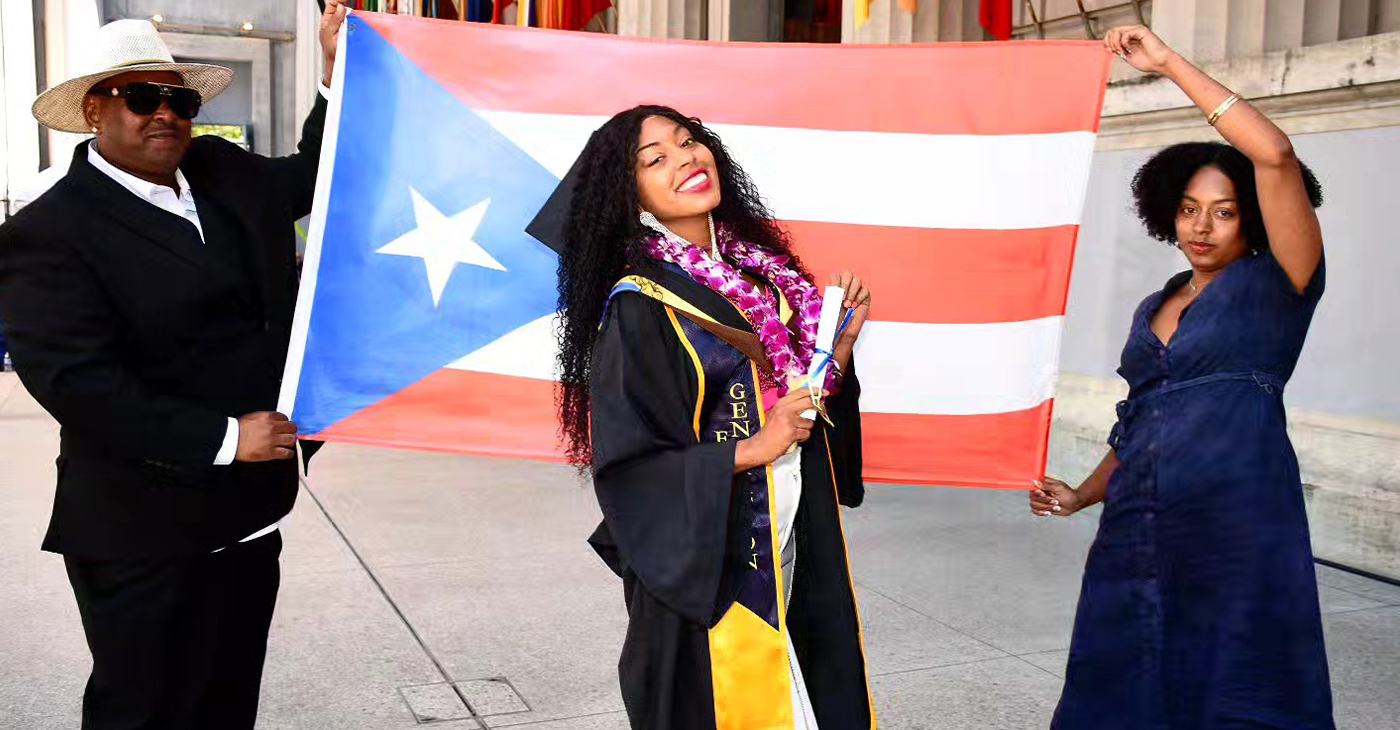
By Magaly Muñoz
On a sunny afternoon at Los Cilantros Restaurant in Berkeley, California, Keyanna Ortiz-Cedeño, a 27-year-old Afro-Latina with tight curly hair and deep brown skin, stares down at her carne asada tacos, “I’ve definitely eaten more tortillas than plantains over the course of my life,” says Cedeño, who spent her childhood in South Texas, among predominantly Mexican-American Latinos. As she eats, she reflects on the views that American politicians have of Latino voters.
“As a Puerto Rican I do not feel spoken to in discussions about Latino voters… which is ironic because we are one of the few Latino communities who are also simultaneously American,” Ortiz-Cedeño says. Puerto Ricans born in Puerto Rico, a U.S. territory, have American citizenship by birth but they do not have the right to vote for president if they live on the island. “I think that we miss out on a really interesting opportunity to have a nuanced conversation by ignoring this huge Latino population that is indigenously American.”
Ortiz-Cedeño, an urban planner who is focused on disaster resilience, homelessness and economic prosperity for people of color, says that political conversations around Latinos tend to shift towards immigration, “I think this ties back into the ways that our perception of ‘Latino’ tends to be Mexican and Central American because so much of our conversation about Latinos is deeply rooted in what’s happening on the border,” she says. “I don’t think that the Afro-Latino vote is frequently considered when we’re talking about the Latino vote in the United States.”
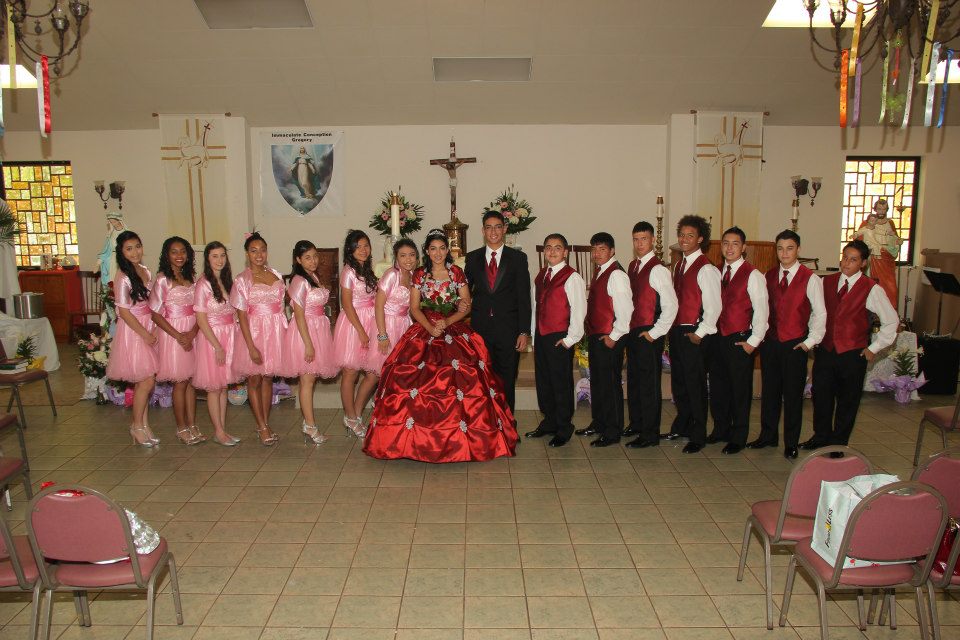
Primarily surrounded by Mexican-Americans while growing up in South Texas, Keyanna participated in many Chicano cultured events, such as being a dama in several quinceñeras. Courtesy photo.
As Ortiz-Cedeño sifts through childhood photos of her as a happy teen dancing with the Mexican ballet folklorico group in high school and as a dama in quinceñeras, she reflects on growing up in South Texas, an area with a large population of white and Mexican-Americans. The Black population was small, and within it, the Afro-Latino population was practically nonexistent.
“It was interesting to try to have conversations with other Latinos in the community because I think that there was a combination of both willful ignorance and a sort of ill intent and effort to try and deny my experience as a Latino,” she says. “There are a lot of folks in Latin America who experience a lot of cognitive dissonance when they think about the existence of Black Latinos in Latin America.
Ortiz-Cedeño comments on the long history of anti-Blackness in Latin America. “Throughout Latin America, we have a really insidious history with erasing Blackness and I think that that has been carried into the Latino American culture and experience,” she says. “People will tell you, race doesn’t exist in Latin America, like we’re all Dominicans, we’re all Puerto Ricans, we’re all Cubans, we’re all Mexicans. If you were to go to the spaces with where people are from and look at who is experiencing the most acute violence, the most acute poverty, the most acute political oppression and marginalization, those people are usually darker. And that’s not by accident, it’s by design.”
Because of the lack of diversity in her Gulf Coast town, as a teenager, despite being the only Spanish-speaker at her job in Walmart, Latinos refused to ask for her help in Spanish.
“Even if monolingual [Spanish-speaking] people would have to speak with me, then they were trying to speak English, even though they could not speak English, versus engaging with me as a Latina,” she says.
“I think that the perception of Latinos in the United States is of a light brown person with long, wavy or straight hair. The perfect amount of curves and the perfect combination of Indigenous and white genes. And very rarely will people also consider that maybe they also have a sprinkle of Blackness in them as well,” she says. “Over 90% of the slave trade went to the Caribbean and Latin America.”
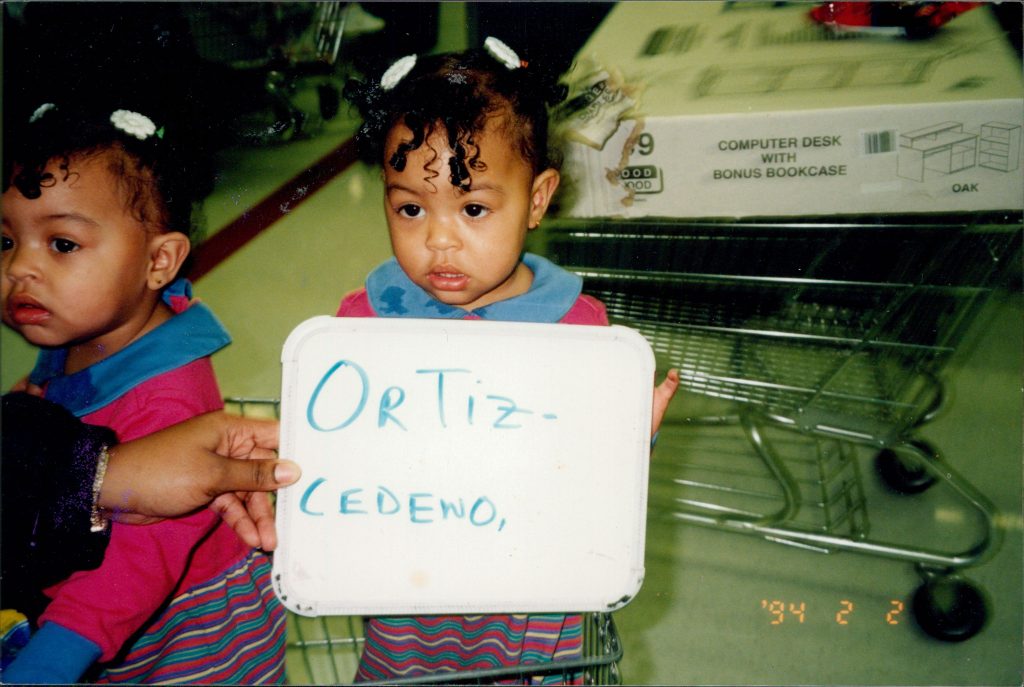
Keyanna as a toddler, holding a whiteboard up with her last name, Ortiz-Cedeño, on it. Courtesy photo.
Ortiz-Cedeño remembers when a Cuban family moved in next door to her in Texas. The teen daughter had blue-eyes, blonde hair and only spoke Spanish, which caused neighboring Latinos to take pause because she didn’t fit the Latino “look” they were used to.
“People didn’t have an option to try and negate her [Latino] identity because they had to acknowledge her for everything that she was,” Ortiz-Cedeño says.
Later on, the girl’s cousins, a Black, Spanish-speaking Cuban family, came into town and again locals were forced to reckon with the fact that not all Latinos fit a certain criteria.
“I think it forced everybody to have to confront a reality that they knew in the back of their mind but didn’t want to acknowledge at the forefront,” Ortiz-Cedeño says.
Having gone through these experiences as an Afro-Latina, Ortiz-Cedeño says it’s easy for her to understand Kamala Harris’ mixed Indian and Jamaican heritage, “It comes really naturally to accept that she is both Indian and Black. Two things can exist at the same time,” she says. “I had a long term partner for about seven years who was South Indian, from the same state as Kamala Harris, so if we had had a kid, they would look like [Harris],” Ortiz-Cedeño jokingly shares.
She says she can relate to having to walk the road of people only wanting to see Harris as a Black American. The talking point about [Harris] not being Indian or not being Black, just deciding to be Black, is really disingenuous and cheap,” she says.
Ortiz-Cedeño believes that the Harris campaign has not capitalized on the vice president’s mixed identity, which could be vital in bringing together different communities to understand each other on a new level and allow for improvements on America’s racial dynamics.
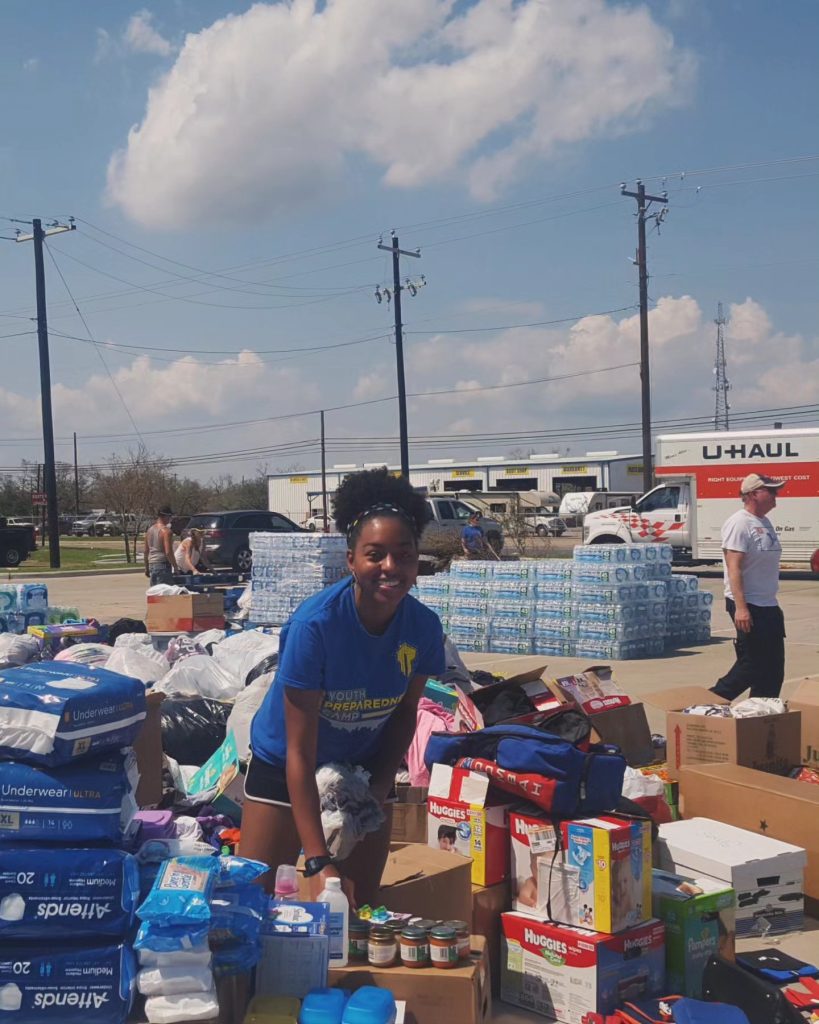
Keyanna co-managed a recovery center with her mother after Hurricane Harvey. They packed essentials, such as diapers, food, and water for families in need. Courtesy photo.
As she rushes into a Berkeley Urban Planning Commission meeting straight out of Ashby BART station, Ortiz-Cedeño explains her love for talking about all things infrastructure, homelessness, and healthcare access. The topics can be dry for many, she admits, but in the end, she gets to address long-standing systemic issues that often hinder opportunities for growth for people of color.
Having lived through the effects of Hurricane Katrina as a child, with the flooding and mass migration of Louisiana residents into Texas, Ortiz-Cedeño was radicalized into issues of displacement, emergency mitigation, and housing at nine years old.
“I remember my principal had to carry her students on her shoulders and swim us home because so many parents were trying to drive in and get their kids from school [due to] the flooding that was pushing their cars away,” she recalls.
Her family relocated to Houston soon after Katrina, only to be met with a deadly Hurricane Rita. They wound up in a mega-shelter, where Ortiz-Cedeño says she heard survivors stories of the unstable conditions in New Orleans and beyond, which got her wondering about urban planning, a term she wasn’t familiar with at the time.
“I think that when you put people in the context of the things that were happening in this country around [these hurricanes], a lot of us started to really think seriously about who gets to make decisions about the urban environment,” she adds.
Watching the heavy displacement of disaster survivors, hearing stories of her Navy veteran father’s chronic homelessness, and her own mother’s work and activism with homeless communities in the non–profit sector put her on the path to progressive politics and solutions, she says. After attending college on the East Coast- where she says she was finally recognized as a Puerto Rican- and working in housing, economic development, and public policy, she returned to California to earn a Master’s in City Regional Planning from UC Berkeley.
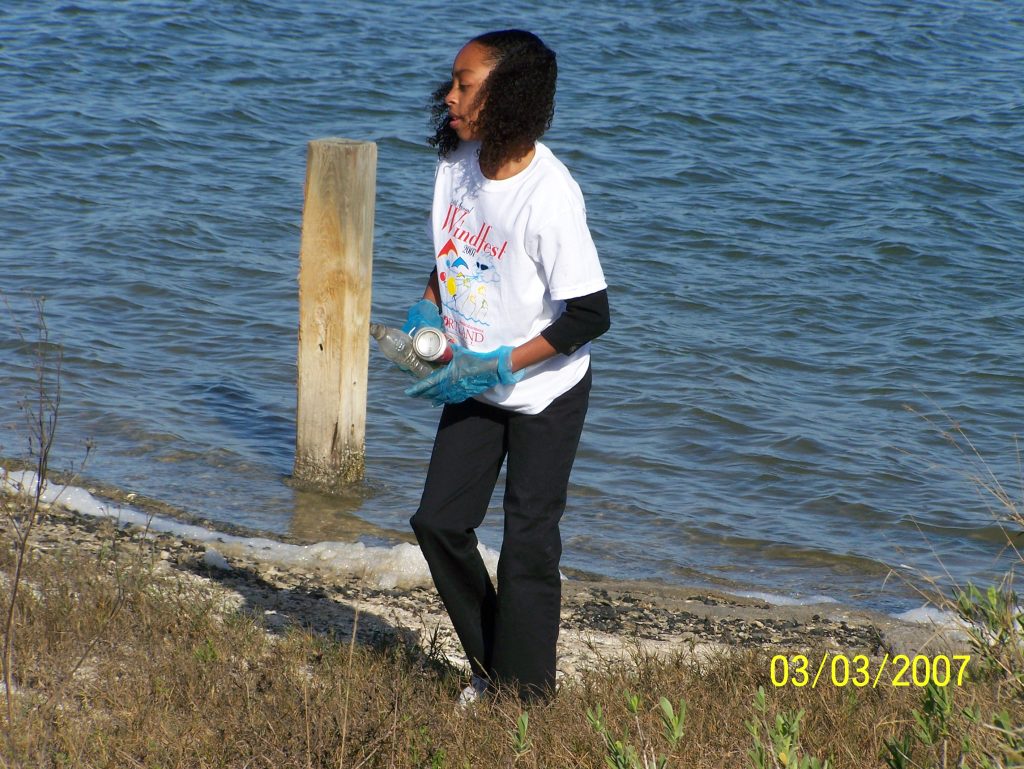
Young Keyanna volunteering at a beach clean up. Activism and giving back to her community has always been a key part of her upbringing. Courtesy photo.
Her vast interest in the urban success of underserved communities even took her abroad to Israel and Palestine when she was an undergraduate college student. “I’ve seen the border with Gaza, I’ve had homestays with farmers in the West Bank,” she says. “For me personally, Palestine is an issue that is really close to the heart.”
“I have a very intimate understanding of the conflict and I’m very disturbed by the way in which the [Democratic] party has not been willing to engage in what I would perceive to be a thoughtful enough conversation about the conflict,” Ortiz-Cedeño says. “The issue of Palestine is going to be one of those that is a make or break issue for her. It has not been one that has been taken seriously enough by the party.”
Ortiz-Cedeño is not under the illusion that one candidate will address every policy issue she wants to see tackled by the president. But she believes it’s better than what former President Donald Trump has to offer.
“Trump has made it very clear what his intentions are with Palestine, and what his relationship is with [Benjamin] Netanyahu,” Ortiz-Cedeño says. “I understand the political strategy that many people are trying to engage in by withholding their vote, but I would also encourage them to re-engage in the political process.”
Casting her vote for Harris is a decision grounded in calculation rather than outright support. “I think I can vote in this election in order to have harm reduction… because I have deep care and concern for other communities that are going to be impacted by a Trump presidency,” Ortiz-Cedeño says.
She also hopes that American politicians will consider the nuance and perspective that Afro-Latinos bring to the table when it comes to politics, policy, and race in America, “When we don’t think expansively about who is Latino in the United States, the breadth of Latino experiences in the United States, we miss an opportunity to capture how diverse Latinos interests are politically.”

This story was reported in collaboration with PBS VOCES: Latino Vote 2024.
-

 Activism4 weeks ago
Activism4 weeks ago‘Jim Crow Was and Remains Real in Alameda County (and) It Is What We Are Challenging and Trying to Fix Every Day,’ Says D.A. Pamela Price
-

 Activism4 weeks ago
Activism4 weeks agoOakland Post: Week of October 30 – November 5, 2024
-

 Alameda County3 weeks ago
Alameda County3 weeks agoD.A. Price Charges Coliseum Flea Market Vendors in Organized Retail Theft Case
-

 Activism4 weeks ago
Activism4 weeks ago‘Criminal Justice Reform Is the Signature Civil Rights Issue of Our Time,’ says D.A. Pamela Price
-

 Activism2 weeks ago
Activism2 weeks agoLIVE! — TOWN HALL ON RACISM AND ITS IMPACT — THURS. 11.14.24 5PM PST
-

 Bay Area3 weeks ago
Bay Area3 weeks agoOakland Mayor Sheng Thao’s Open Letter to Philip Dreyfuss, Recall Election’s Primary Funder
-

 Activism4 weeks ago
Activism4 weeks ago“Two things can be true at once.” An Afro-Latina Voter Weighs in on Identity and Politics
-

 Bay Area3 weeks ago
Bay Area3 weeks agoPoll Shows Strong Support for California’s Controversial Prop 36 Crime Initiative


